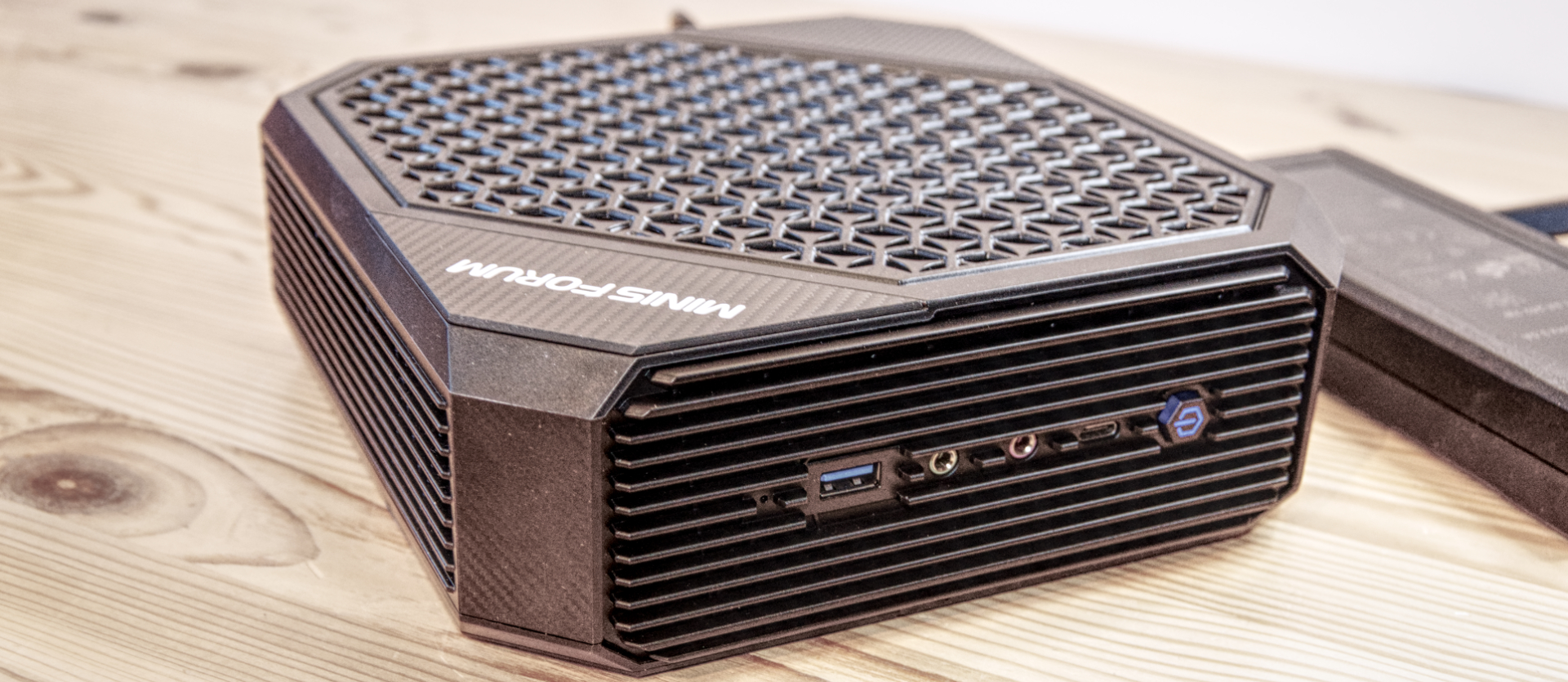Early Verdict
The Minisforum HX77G is an exciting spur from the Mini PC path. It takes some of the best AMD mobile parts, combining them to create a punchy system with discrete graphics. It offers some upgrade options and impressive interconnectivity, though it is larger than a typical NUC enclsoure.
Pros
- +
AMD Ryzen 7 7735HS
- +
RX 6600M discrete graphics
- +
Expansion options
Cons
- -
Not that Mini
- -
Only RDNA2 graphics
- -
Won’t VESA mount
Why you can trust TechRadar
The Mini PC has become even more popular since the Intel 12th and 13th generation laptop processors appeared, and AMD countered with its latest mobile Zen 3 and 4 architecture chips. These chips can deliver desktop processor performance but with frugal power management and minimum fan noise.
However, to get the level of performance that the Minisforum Neptune Series HX77G offers, it needed a larger enclosure than a typical NUC, making this machine more of a small desktop compared to many of the best mini PCs we've tried.
Where things get interesting is what Minisforum did with that extra volume. It allowed the engineers responsible for the HX77G to unleash the full potential of the AMD CPU and its chipset, with plenty of space for external ports and internal expansion.
If you’re looking for a small-ish system without all the caveats associated with Mini PC systems, then the Minisforum HX77G might be perfect for you.
Minisforum Neptune HX77G: Price and availability
Available now in the UK, the Neptune FX77G comes in three flavours, starting with a barebones system (no memory or storage) for £629. Above that is a £759 option with 32GB of RAM and 512GB of storage, and £799 to increase that drive space to 1TB.
For American customers, those three SKUs are $629, $779 and $779. In addition, US customers get an extra 64GB of RAM and 1TB of SSD model can be bought for $879.
It can also be found on Amazon.com and Amazon.co.uk.
Sign up for breaking news, reviews, opinion, top tech deals, and more.
Minisforum Neptune HX77G: Design
| Feature | Specification |
|---|---|
| CPU: | AMD Ryzen 7 7735HS (8-core, 16-thread) |
| GPU: | AMD Radeon RX 6600M (GDDR6 8GB) |
| RAM: | 32GB DDR5 Dual channel (SODIMM Slots×2) |
| Storage: | 1TB NVMe M.2 2280, unused M.2 2280 |
| Ports | RJ45 2.5 Gigabit Ethernet Port ×1 USB3.2 Gen1 Type-A Port ×1(In Front) USB3.2 Gen2 Type-A Port ×1 USB3.2 Gen1 Type-A Port ×2 USB3.2 Gen1 Type-C Port ×1(In Front) USB4 Port ×2(In Back) HDMI2.1 ×2 Clear CMOS ×1 Microphone Jack ×1 Headphone Jack ×1 |
| Networking: | 2.5GbE LAN, WiFi 6, Bluetooth 5.2 |
| OS: | Windows 11 Pro (pre-installed on systems that aren't barebones) |
| PSU: | 19V 13.8A |
| Dimensions: | 205*203*69.3mm |
| Weight: | 1.21 kg (2.67 lbs) |
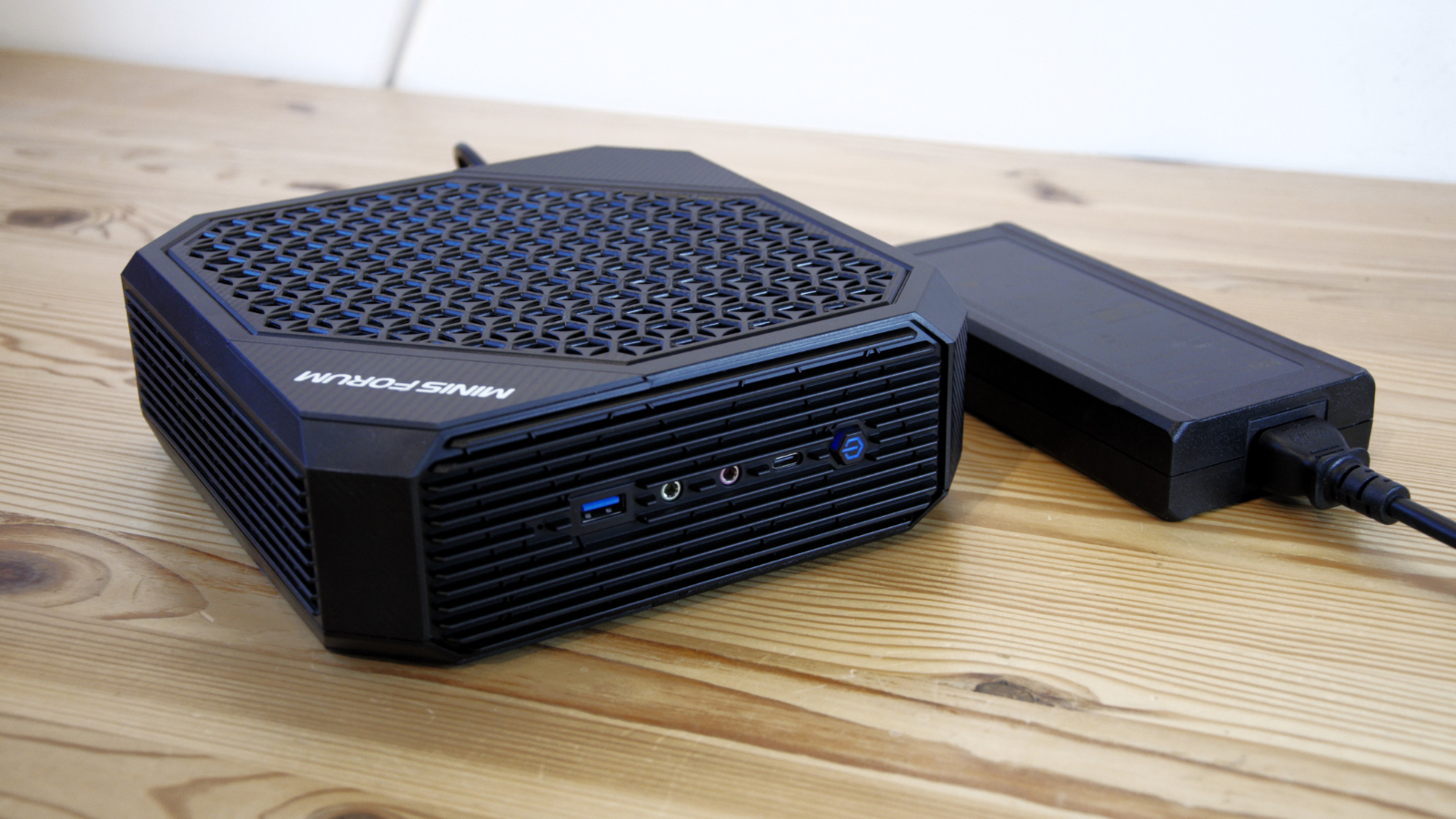
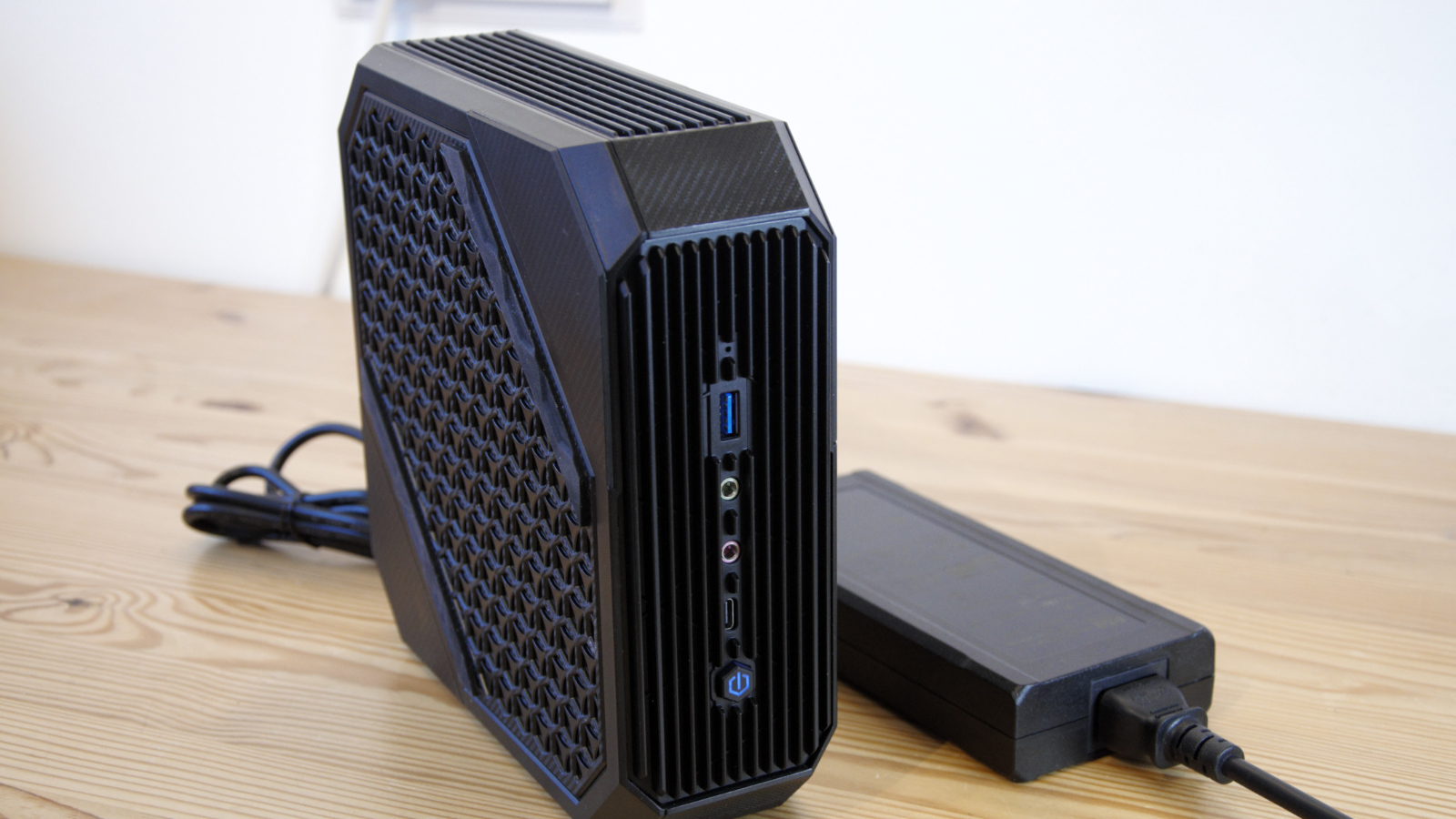
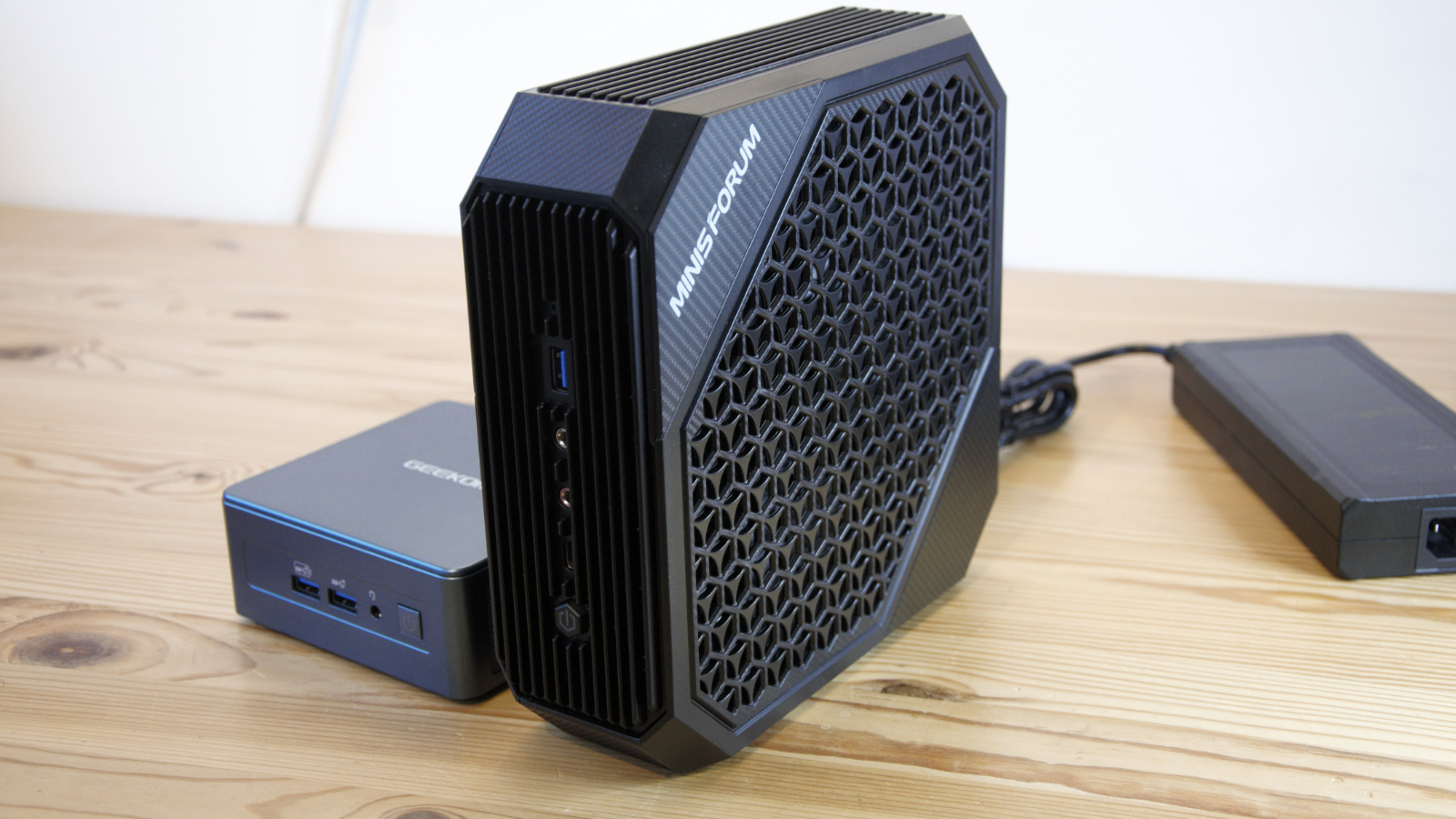
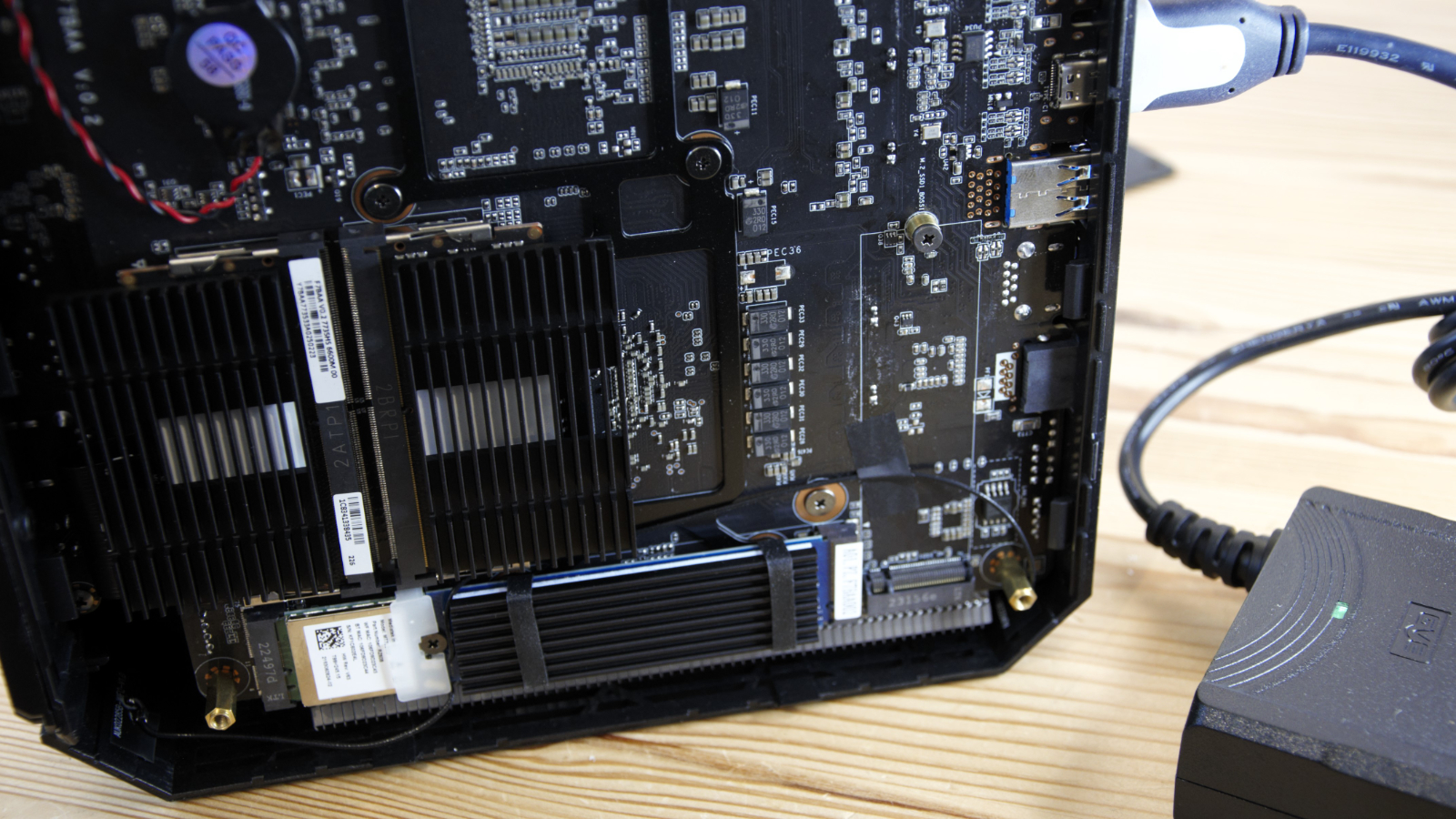
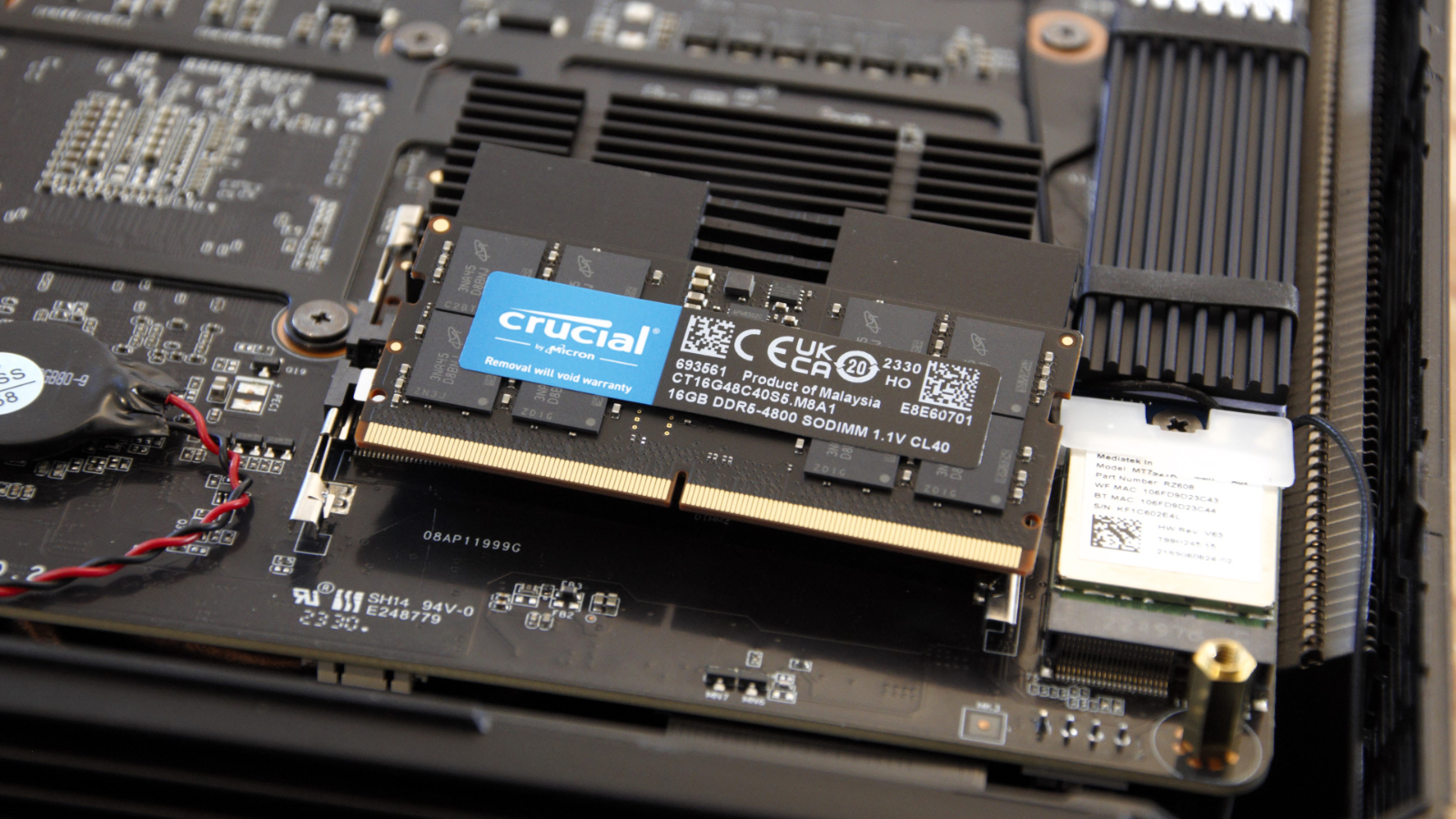
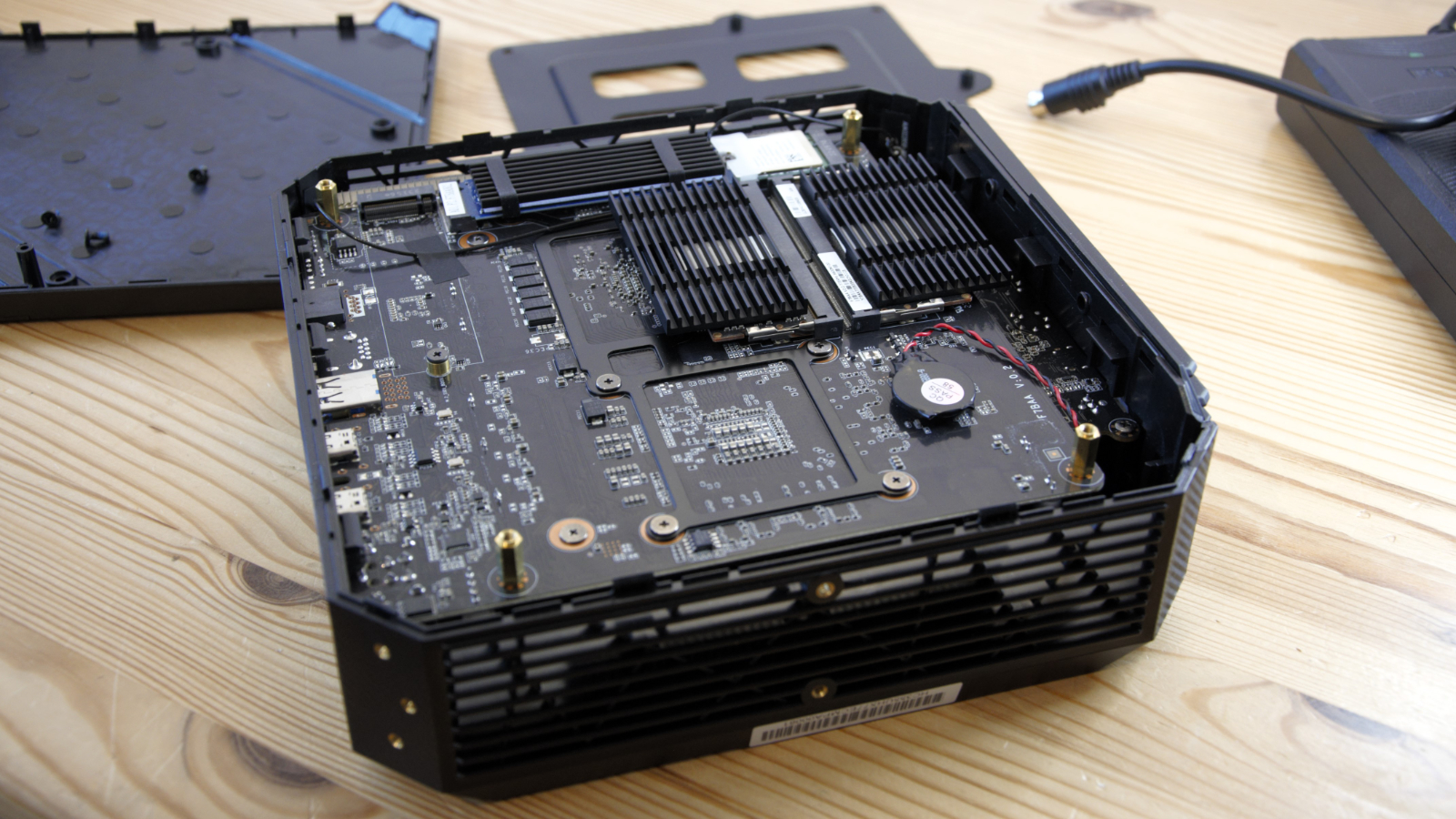
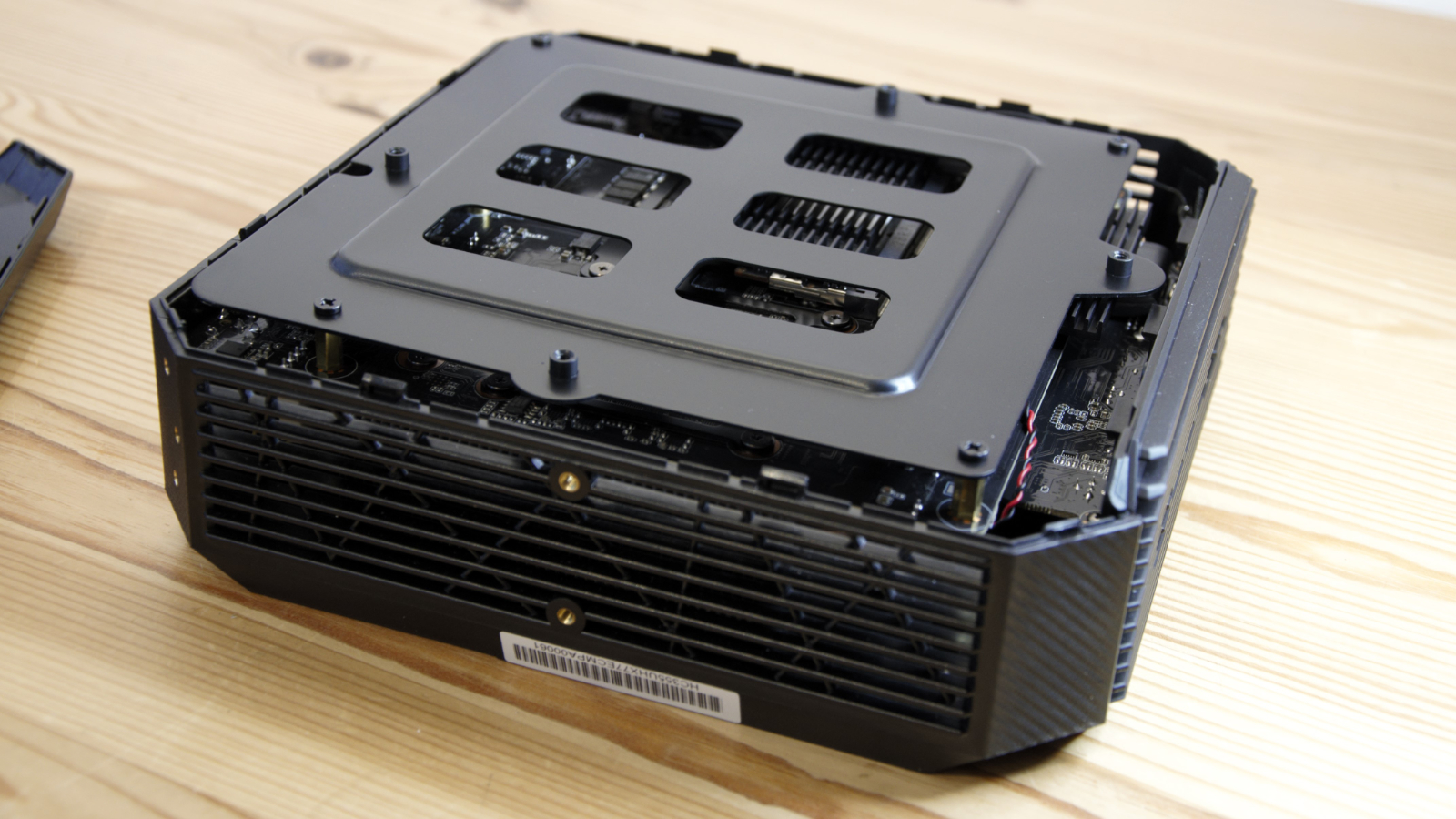
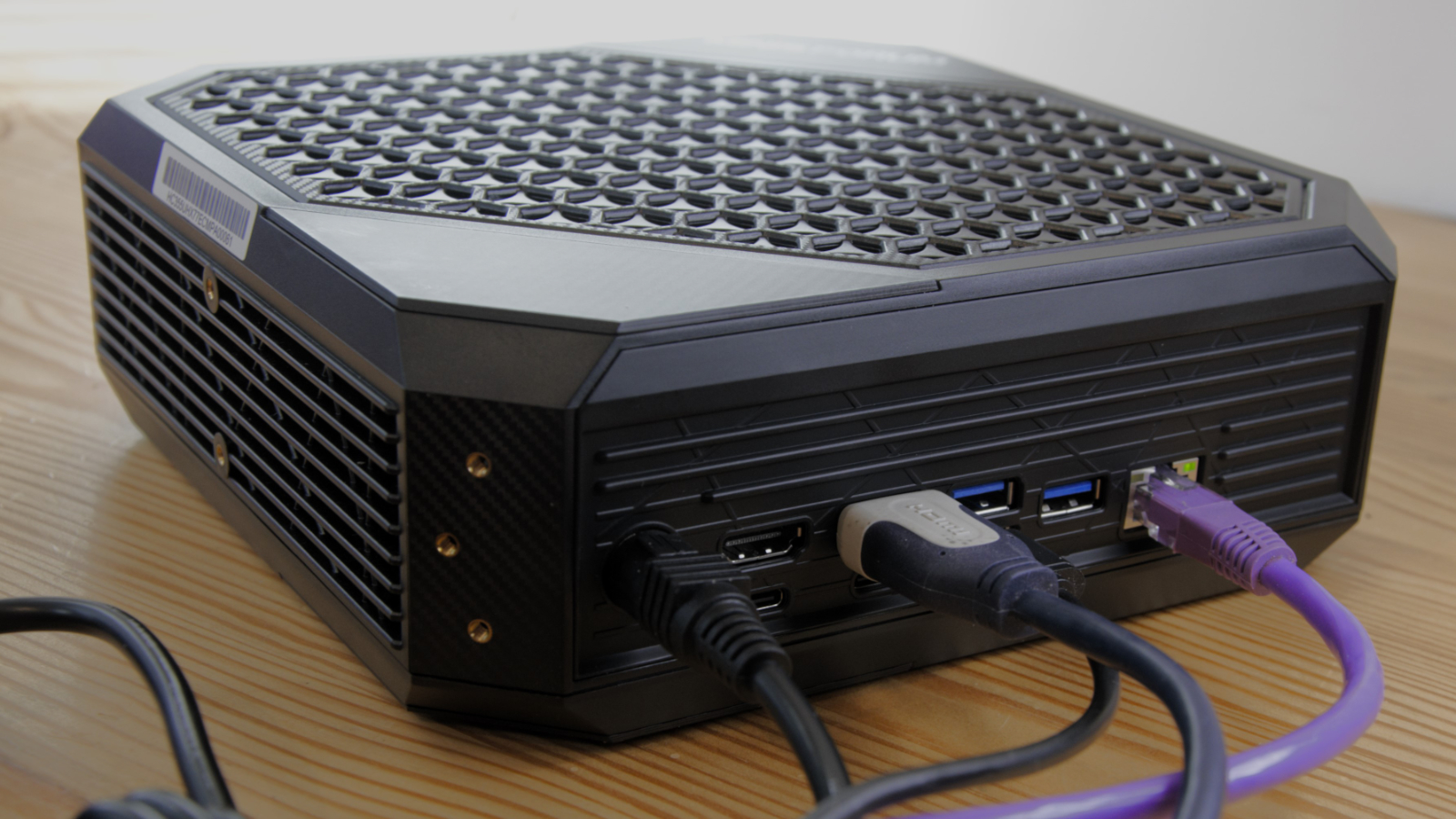
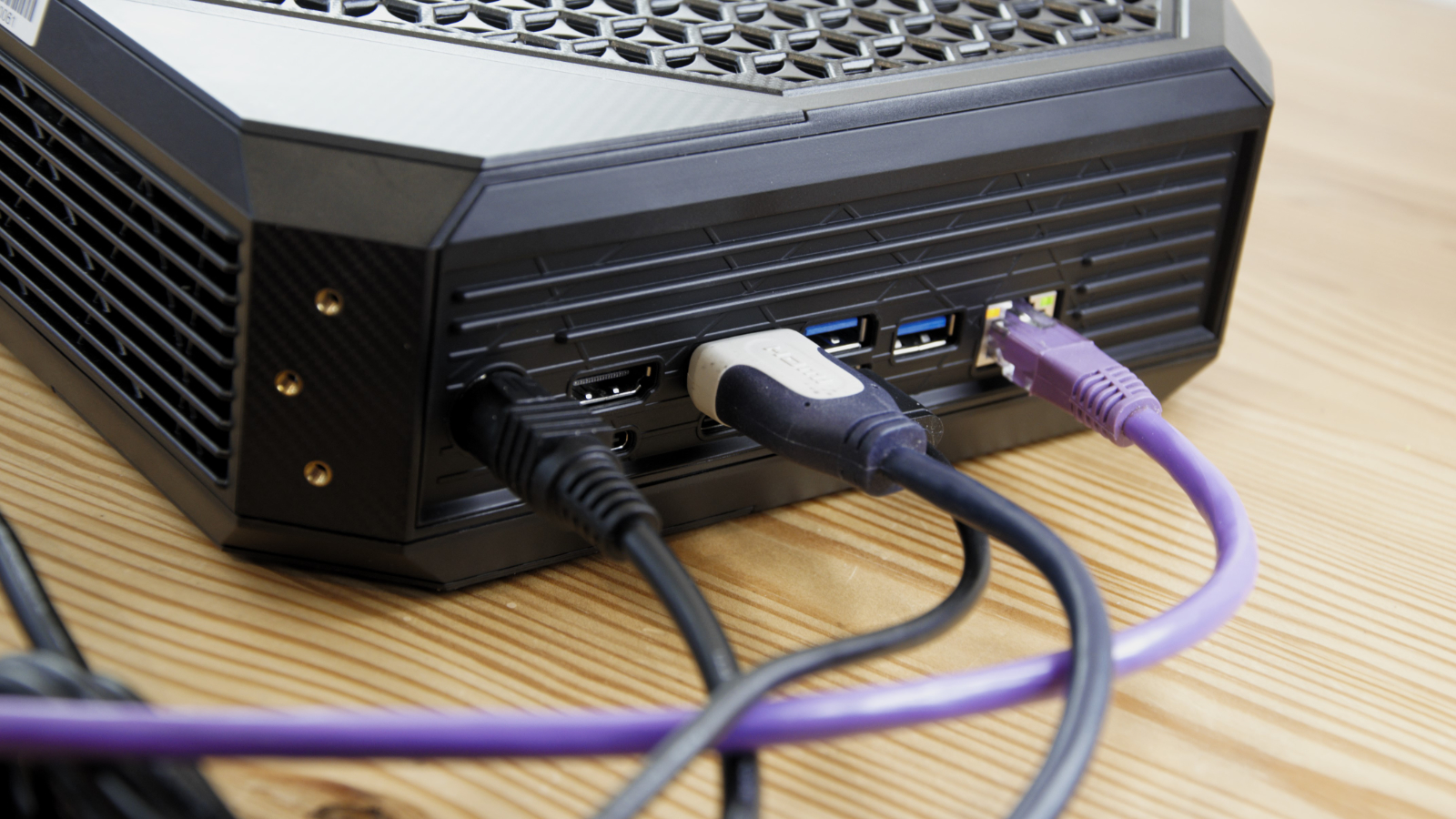
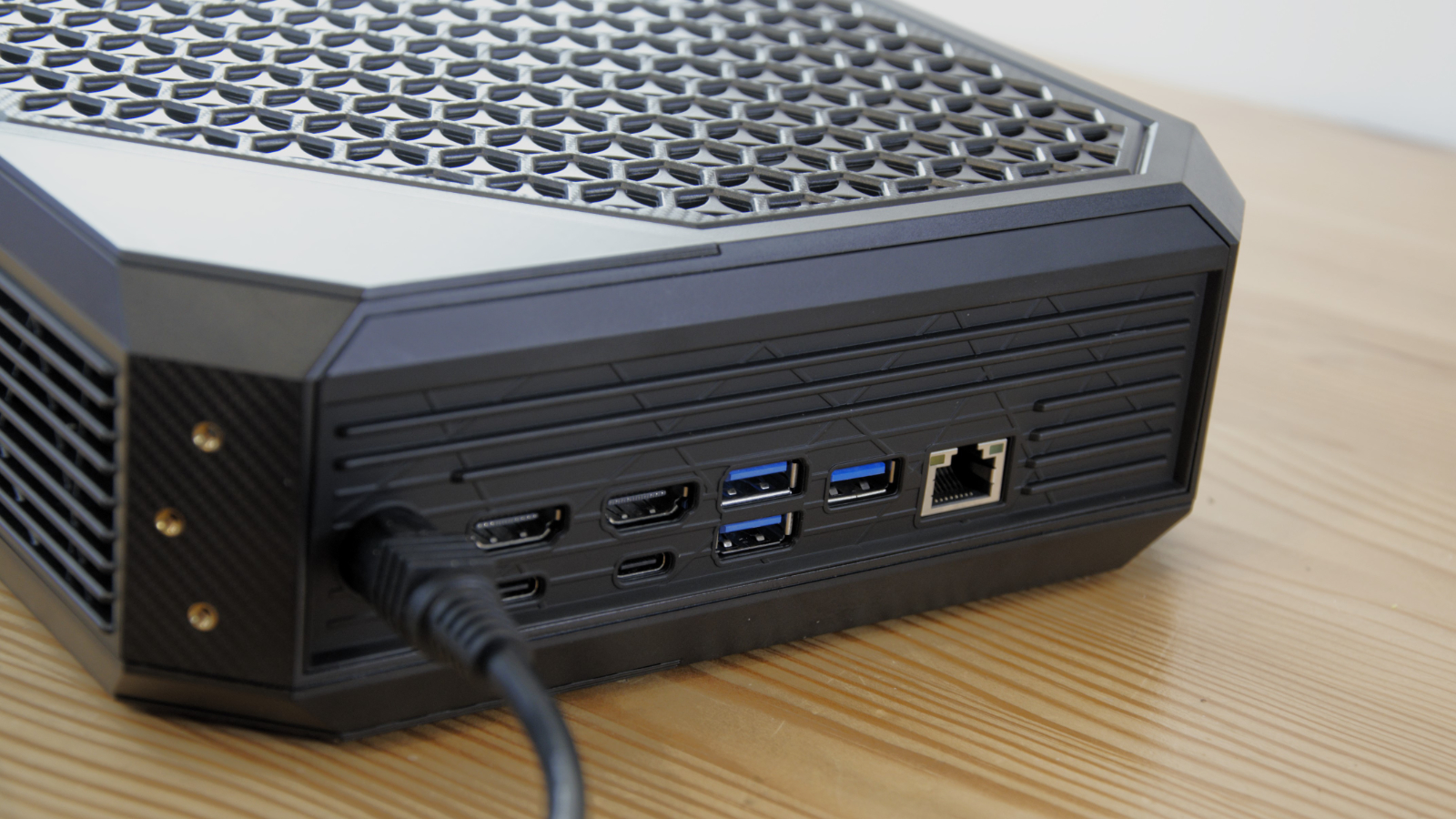
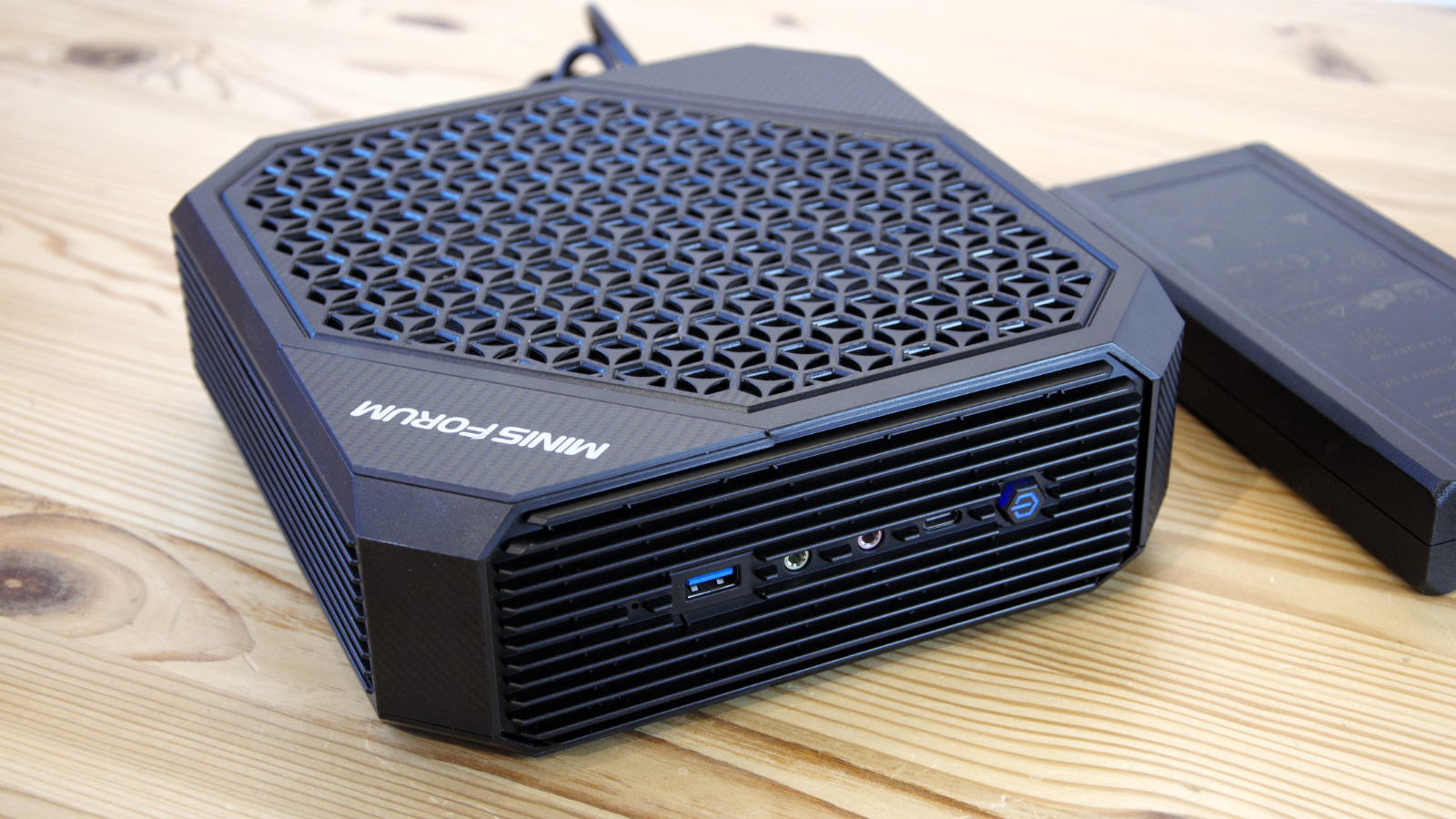
From the outset, the HX77G diverges from most Mini PC designs because it isn’t super-small, at least twice the size in every dimension of a typical NUC. Where those systems use a 4-inch motherboard, the one here is at least 8-inches square, providing plenty of space for mounting extra technology and ventilation.
The elaborate carbon fibre adorned enclosure can either lay flat on two rubber strips on the underside or be placed vertically on an included wedge-shaped foot. Sadly, this machine is too big to be VESA mounted.
The front and back provide an abundance of external ports. This selection includes no less than seven USB ports, with two that are USB 4.0/Thunderbolt flavour. Alongside the USB are two HDMI 2.1 video outs and a 2.5Gbps Ethernet LAN port, making this a potentially ideal choice as a media centre system or a central file store.
But, where NUC systems often disappoint is with limited upgrade potential, and the HX77G has that requirement covered.
Removing four screws hidden under the rubber feet makes it possible to remove the top of the HX77G and then remove a metal frame to have full access to the mainboard. Our review system came with 32GB of Corsair branded DDR5, but these 16GB modules can be removed to upgrade this machine to 64GB if required.
But the upgrade option we genuinely liked was a completely unoccupied M.2 2280 slot, allowing an easy means to clone the existing 512GB storage to another M.2 device or add additional internal storage.
What isn’t easy to access is the graphics card. Unlike a traditional PC, this hardware is another layer beneath the mainboard and connected by a custom PCIe bridge.
The physical separation of the primary system and graphics modules allows air to flow through the case easily, with it being pulled in through the sides and vented through a hexagon lattice on the top.
Overall, some considerable thought went into the design of the HX77G, how it might be used and what owners might want to do with it.
Minisforum Neptune HX77G: Performance
Due to a technical difficulty, we couldn't benchmark the HX77G, something we really wanted to do. What this system promises is the computing performance of the AMD Ryzen 7 7735HS, an eight-core hyperthreading CPU mashed with the video processing capability of the AMD Radeon RX 6600M.
We've seen the Ryzen 7 7735HS before in other Mini PCs, and it's a very impressive processor offering eight cores and sixteen threads and a default TDP range of 35 to 54W. As this isn't a laptop with a battery, this version gets to use its full 54W envelope, and it also gets the benefit of not using the Radeon 680M integrated GPU but the independently powered RX 6600M.
The RX 6600M is a Navi 23 chip (RDNA 2 architecture) featuring 1,792 cores, 28 compute units and 8GB of fast GDDR6 memory for its computations and display. Even if this had the same GPU power as the Radeon 680M, it would advantage the system by using its own independent memory, not impacting main memory bandwidth, allowing for much better parallelism.
But it's at least twice as fast as its integrated counterpart, and in some scenarios, it can be even faster. Where the Radeon 680M might struggle with having many visual enhancements active on a game at 1080p, the RX 6600M should be playable at these resolutions on many titles and without the detail settings forced to the lowest level.
However, it's essential to acknowledge that the RX 6600M isn't identical to the desktop RX 6600 GPU, which is at least another 10% quicker. And AMD has superseded this design with the RX 7600M. That design is marginally quicker but also uses the RDNA 3 architecture.
The only downside in this context to the RX 6600M is that its power demands are much greater than the rest of the system, and Minisforum supplies a very large PSU rated for a maximum output of 262.2W.
Overall, this machine will perform much better than any AMD or Intel mobile platform with an integrated GPU, though true gamers will still want to consider using a system with a card slot to upgrade their GPU over time.
Minisforum Neptune HX77G: Early verdict

We've seen plenty of brands brandishing the word 'Game' for Mini systems when they've only integrated GPUs. And while these have been getting progressively better, they don't yet compete with even the lowest rung on the discrete graphics card ladder.
With the RX 6600M GPU, the HX77G has the potential to double the performance of the best systems with an integrated GPU. That GPU is well-suited to work with a CPU like the AMD Ryzen 7 7735HS, a highly efficient design that exploits its Zen3+ architecture and TSMC 6nm FinFET fabrication. All this comes together in an expanded enclosure, allowing for relatively easy upgrades and plentiful external ports, making the HX77G a highly flexible solution.
Where it might have been better is that getting inside isn't as easy as it can be on some systems, it draws much more power than a typical NUC, it takes up more desk space, and the cost of the GPU adds about $100 to that of a NUC with the same CPU, RAM, and storage.
Minisforum should be commended for creating something that isn't another by-the-numbers NUC, and the HX77G could find favour with those who want a small system with discrete GPU performance.
Mark is an expert on 3D printers, drones and phones. He also covers storage, including SSDs, NAS drives and portable hard drives. He started writing in 1986 and has contributed to MicroMart, PC Format, 3D World, among others.
What is a hands on review?
Hands on reviews' are a journalist's first impressions of a piece of kit based on spending some time with it. It may be just a few moments, or a few hours. The important thing is we have been able to play with it ourselves and can give you some sense of what it's like to use, even if it's only an embryonic view. For more information, see TechRadar's Reviews Guarantee.
